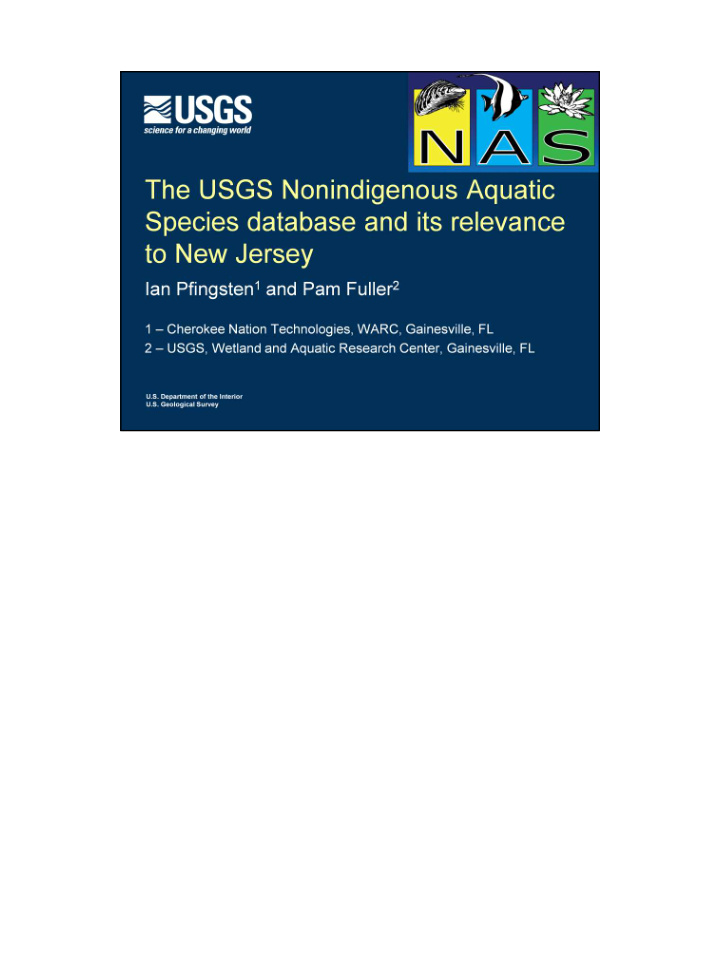



The Nonindigenous Aquatic Nuisance Prevention and Control Act was in response to the zebra mussel introductions into the great lakes in the late 80s. The Act created the ANS Task Force, which is the coordinating body for NAS issues.
Anything that lives in the water, anywhere it is not ‘supposed to be’, anywhere in the US, including Guam, Puerto Rico, and the Virgin Islands. We do not classify species as good or bad, but we do track species that would be considered highly invasive as well as more transient or waif introductions that may not pose a significant impact on communities or ecosystems. Both Carolina fanwort and floating primrose-willow are natives of the Southeastern US.
Mostly freshwater Narrowed down from marine
Fact sheets contain photographs and images of the species, and information on nomenclature, identification, native and non-native ranges, ecology, introduction pathways and impacts, and references.
This is how to navigate to our spatial query map viewer.
Click on the image to navigate to our map viewer.
Query by taxonomic group and state
Clusters do not imply population size, but only the amount of records we have. Individual specimen points will only separate by color up to seven species until we run out of color-blindness appropriate choices. List of species where you can visit fact sheets and view entire range by HUC-8 watersheds.
Redefine query for Trapa and look at records tab
Draw polygon for selecting southern extent of range
Select specimen ID
Other options to try: Reset query and draw polygon around Trenton/Delaware River area Query accurate plant records Change layer and save map state Download data
Phone Fax E-mail Snail-mail Website Mobile devices
The last item I will mention is our Alert System for anyone interested in new occurrences to an area. State and regional Taxonomic group High-profile species (does not include any plants at this time) Bonus alerts Return introductions after prolonged absence Successful eradications
New to state, county, or sub-basin drainage Sighted less than two years ago We validate the alert before it is sent
Alerts can be searched and mapped.
We want to continue to provide the most current distributions to the public. The plants section was revived due to interest around the country, and you are the ones that can help keep us informed of infestations
Recommend
More recommend